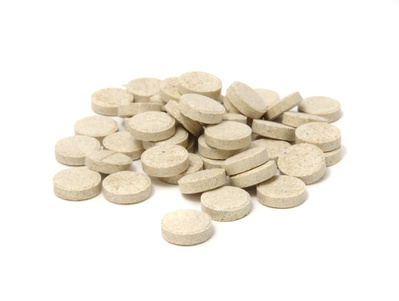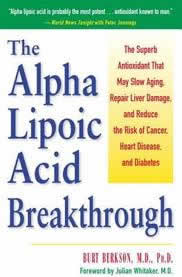Shark Cartilage is natural substance from the shark’s cartilaginous skeleton. The basic compounds in shark cartilage are proteoglycans and glycoproteins, as well as protein and calcium salts. Different types of extracts are made from shark cartilage including squalamine lactate, U-995 and AE-941 (Neovastat).
Shark Cartilage Medical Benefits
Shark cartilage is used as a dietary supplement to treat cancer, arthritis, psoriasis, macular degeneration, and inflammatory conditions.
Cancer
Cancer therapy designed to stop the growth of blood vessels is called anti angiogenesis. Investigators have been interested in cartilage as a possible therapy for cancer because cartilage doesn’t contain any blood vessels. Some lab and animal-based studies have shown that some components in shark cartilage have the effects to slow the growth of new blood vessels. However no study has shown that it can do this in humans. An extract from shark cartilage called Neovastat® (AE-941) has been developed and is being researched as a cancer cure.
Taking shark cartilage extract Neovastat by mouth seems to enhance survival in people with advanced kidney cancer. Neovastat was administered to 331 patients with advanced solid tumors in two phase I/II trials. The results of these trials, but, have not been fully reported. A retrospective analysis involving a subgroup of patients with advanced non-small cell lung cancer suggests that Neovastat is able to lengthen the survival of people with this disease. In 2003, the findings of a phase I/II trial of Neovastat in 80 patients with advanced non-small cell lung cancer showed that there was a significant survival advantage for patients receiving the highest doses (2.6 mL/kg/day) of Neovastat.
In a study, from” MD Anderson Cancer Center“, found that shark cartilage failed to increase survival of patients with stage-3, non-small-cell lung cancer. Results from a study reported in the July, 2005 edition of the” journal Cancer” demonstrated that adding powdered shark cartilage to normal cancer treatment didn’t help patients with advanced colorectal or breast cancer. A extremely purified extract of shark cartilage named AE-941 (Neovastat) was tested in a clinical study and reported in 2010. AE-941 was given alongside chemotherapy and radiotherapy to patients with advanced lung cancer. The study demonstrated that AE-941 gave few adverse effects and was safe to take but did not help patients to live longer.
Arthritis
Shark Cartilage components, glucosamine, chondroitin sulphate and mucopolysaccharidess, are necessary building blocks for healthful joints, tendons, ligaments and bones. Shark Cartilage contains mucopolysaccharides, which stimulate immune response and are useful for inflammation; and an angiogenesis-inhibiting protein, which blocks the formation of new blood vessels. The mucopolysaccharides are known to decrease inflammation. When applied to the skin products containing shark cartilage in combination with glucosamine sulfate, chondroitin sulfate, and camphor, reportedly lessen arthritis symptoms.
 Canadian scientists, have discovered that when a therapeutic preparation using shark cartilage is applied to the skin, it demonstrated anti-inflammatory effects. A study that was performed in the seventies found out that when shark cartilage injections were given to 28 people with severe pain, 19 patients reported that their relief lasted for almost an year while just 3 out of the 28 did not respond to the therapy. In a other study, 147 people were given either shark cartilage extract or a placebo. 5 years later, the cartilage group reported a drop of 85 % in pain scores, compared to a 5 % drop in the placebo group.
Canadian scientists, have discovered that when a therapeutic preparation using shark cartilage is applied to the skin, it demonstrated anti-inflammatory effects. A study that was performed in the seventies found out that when shark cartilage injections were given to 28 people with severe pain, 19 patients reported that their relief lasted for almost an year while just 3 out of the 28 did not respond to the therapy. In a other study, 147 people were given either shark cartilage extract or a placebo. 5 years later, the cartilage group reported a drop of 85 % in pain scores, compared to a 5 % drop in the placebo group.
Psoriasis
Some preliminary clinical findings show that extracts of shark cartilage may lessen inflammation and itching from psoriasis. Psoriasis is a skin problem that causes skin redness and irritation. Researches has found that the psoriasis-causing changes in the skin begin in the immune system when some immune cells (T cells) are triggered and become overactive. Psoriasis causes cells to build up rapidly on the surface of the skin, forming thick silvery scales and itchy, dry, red patches that are sometimes painful. Researches have shown that shark cartilage extract prevents the formation of new blood vessels. The growth of new blood vessels is believed to play role in the development and progression of psoriasis lesions. Additionally, Shark cartilage is known to have anti-inflammatory effects. Researchers extracted the active agent (Neovostat) from shark cartilage and test its antiangiogenesis effect using the embryonic vascularization test. The result showed that topical Neovostat had a positive effect in psoriasis.
In one study, a specially prepared extract of shark cartilage was found to inhibit both angiogenesis as well as the activity of a collagen digesting enzyme. Also, when the shark cartilage extract was applied to the forearms of test participants it was shown to have anti-inflammatory activities. This finding, demonstrate that shark cartilage has a positive effect in psoriasis. Oral preparation of Neovastat containing water-soluble shark cartilage extract in a single-center, randomized, open-label, phase I/II trial found Neovastat to improve the Psoriasis Area and Severity Index (PASI) in 50%, 41.7%, and 30.8% of 49 participant with psoriasis receiving 240, 120, and 60 ml/day Neovastat respectively. In other study, 10 patient with psoriasis where given shark cartilage for 40 days. The findings were that participants complaining of itching noticed its disappearance on day 6. Over the course of the 40 days, additional indications of improvement were noticed, and seven participant were healed by the end of the study. The investigators concluded that shark cartilage seems to “be able to control the greater part of psoriasis pathogenetic mechanism.”
How to Use
Shark cartilage comes in different forms. Shark cartilage is generally taken by mouth as a powder, capsule or liquid extract. Also, in trials, it has sometimes been given as an enema (into the back passage – rectum) or injected under the skin. Neovastat is a highly purified extract of shark cartilage. Other shark cartilage supplements may not have similar effects.
Side Effects
Some studies have reported adverse effects such as nausea, vomiting,stomach upset, constipation, low blood pressure and fatigue. A few patients who were administered with the injections were found to be at a risk of developing hypercalcemia. Children, patients who have had a recent heart attack or surgery, women who are pregnant or breast feeding not use cartilage.
 Brewer’s yeast is a important source of chromium, a mineral used to transport sugar across cell membranes. (Two tablespoons of brewer’s yeast yields about 120 micrograms of chromium, an amount equal to the recommended daily allowance). In vitro and in vivo studies show that chromium potentiates the activity of insulin. Some researches demonstrate that chromium supplements may help patients with diabetes control blood sugar levels. This mineral may help the body use insulin more effectively and this can lower blood sugar levels. Because brewer’s yeast is a good source of chromium, experts think it may help treat high blood sugar. One Danish study reported that participants with hypoglycemia demonstrated an development in their symptoms after taking two tbsp of brewer’s yeast every day for 1 month.
Brewer’s yeast is a important source of chromium, a mineral used to transport sugar across cell membranes. (Two tablespoons of brewer’s yeast yields about 120 micrograms of chromium, an amount equal to the recommended daily allowance). In vitro and in vivo studies show that chromium potentiates the activity of insulin. Some researches demonstrate that chromium supplements may help patients with diabetes control blood sugar levels. This mineral may help the body use insulin more effectively and this can lower blood sugar levels. Because brewer’s yeast is a good source of chromium, experts think it may help treat high blood sugar. One Danish study reported that participants with hypoglycemia demonstrated an development in their symptoms after taking two tbsp of brewer’s yeast every day for 1 month. Bee pollen contains rutin, which strengthens capillaries and blood cell walls. Rutin is a glucoside that provides increased resistance to the walls of the capillaries, and its basic function is to reinforce the general resistance throughout the entire capillary system. Also, strengthens the heart, and helps control high blood pressure.
Bee pollen contains rutin, which strengthens capillaries and blood cell walls. Rutin is a glucoside that provides increased resistance to the walls of the capillaries, and its basic function is to reinforce the general resistance throughout the entire capillary system. Also, strengthens the heart, and helps control high blood pressure. Alpha-Lipoic acid possesses strong antioxidant activity. The reduced form
Alpha-Lipoic acid possesses strong antioxidant activity. The reduced form  Blueberries, cherries, cranberries, pomegranate, apples, apricots, grapefruits, oranges,
Blueberries, cherries, cranberries, pomegranate, apples, apricots, grapefruits, oranges,